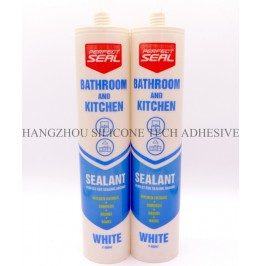Seasonal Inspection Priorities for Sealants: Key Differences and Technical Considerations
Sealants are critical components in construction, automotive, and industrial applications, ensuring airtightness, waterproofing, and structural integrity. However, their performance is highly influenced by seasonal environmental changes. Understanding how temperature, humidity, and material behavior vary across seasons is essential for maintaining optimal functionality and preventing premature failure.

Spring: Addressing Humidity and Material Degradation
Spring’s rising temperatures and increased humidity create conditions conducive to mold growth and material swelling. For example, in automotive applications, door and window sealants may absorb moisture, leading to reduced elasticity and compromised adhesion. A 2024 study on vehicle maintenance highlighted that spring inspections should focus on identifying cracks or peeling in rubber seals, particularly in regions with frequent rainfall.
In construction, spring’s fluctuating temperatures can accelerate the degradation of silicone-based sealants used in exterior joints. Testing methods such as the weight change rate experiment—which evaluates a sealant’s resistance to solvent absorption by measuring mass variations after immersion in water or other media—are valuable here. A weight change exceeding 40% indicates poor durability, necessitating replacement. Additionally, inspectors should check for discoloration or softening, as these signs suggest UV damage from prolonged sun exposure during longer daylight hours.
Summer: Managing High-Temperature Stress and Thermal Expansion
Summer’s intense heat poses challenges for sealants, especially in outdoor or industrial settings. High temperatures can reduce a sealant’s plasticity, increasing hardness and brittleness. For instance, polyurethane sealants used in concrete joints may harden excessively, leading to cracking under thermal stress. A 2025 report on building material testing emphasized the importance of verifying a sealant’s elastic recovery rate—its ability to return to its original shape after deformation—under elevated temperatures. Samples exposed to 50°C for 72 hours should retain at least 80% of their original elasticity to ensure long-term performance.
Thermal expansion is another critical factor. In automotive engines or HVAC systems, sealants must accommodate the expansion of metal components without losing adhesion. Inspectors should prioritize checking for gaps or separation at interfaces, particularly in areas exposed to direct sunlight or engine heat. Non-destructive testing methods, such as ultrasonic imaging, can detect subsurface voids or delamination caused by thermal cycling.
Autumn: Preparing for Cold-Weather Contraction and Moisture Intrusion
As temperatures drop in autumn, sealants contract, potentially creating pathways for moisture ingress. This is particularly problematic in cold-chain logistics, where temperature-sensitive goods rely on airtight seals. A 2024 case study on pharmaceutical storage revealed that improper autumn maintenance led to a 15% increase in sealant-related failures, causing product contamination. Inspectors should focus on verifying the low-temperature flexibility of sealants, ensuring they remain pliable below 0°C. This can be tested by bending cured samples at -10°C; any cracking indicates inadequate performance.
Autumn’s wet conditions also heighten the risk of water penetration. In roofing applications, sealants around vents or skylights should be inspected for signs of lifting or erosion. Techniques like the water immersion test—submerging sealed joints for 24 hours to check for leaks—are effective for identifying vulnerabilities. Additionally, inspectors should clear debris from drainage channels to prevent water accumulation, which can exacerbate sealant degradation.
Winter: Mitigating Freezing Damage and Low-Temperature Brittleness
Winter’s freezing temperatures pose severe risks to sealants, especially in outdoor or unheated environments. Water-based sealants may freeze, causing internal stress that leads to cracking or spalling. For example, in bridge construction, sealants used in expansion joints must resist freezing-thaw cycles to prevent structural damage. A 2025 study on cold-weather infrastructure highlighted the use of helium mass spectrometry—a high-sensitivity leak detection method—to identify micro-cracks in sealants exposed to sub-zero temperatures. This technology can detect leaks as small as 10⁻¹⁰ Pa·m³/s, ensuring compliance with safety standards.
Low-temperature brittleness is another concern. Sealants in automotive or aerospace applications must maintain flexibility to absorb vibrations without fracturing. Inspectors should prioritize testing the impact resistance of sealants at temperatures below -20°C. Samples dropped from a fixed height onto a hard surface should not shatter or crack, indicating sufficient toughness. Additionally, applying temporary protective coatings or heaters in extreme cold can prevent sealant failure during installation or repair.
Cross-Seasonal Considerations: Material Compatibility and Long-Term Performance
Regardless of the season, material compatibility remains a universal priority. Sealants must bond effectively with substrates like concrete, glass, or metal to prevent adhesion loss. For instance, a 2023 market surveillance report found that 13% of failed sealants in construction projects were due to incompatible substrate materials. Inspectors should verify compatibility through lap shear tests, which measure the force required to separate bonded surfaces. A minimum shear strength of 0.6 MPa is typically required for structural applications.
Long-term performance also depends on resistance to environmental factors like UV radiation, ozone, and chemicals. Sealants in industrial settings may be exposed to solvents or acids, necessitating regular checks for swelling or discoloration. Techniques like Fourier-transform infrared spectroscopy (FTIR) can analyze chemical changes in sealants, identifying degradation before visible symptoms appear.
By tailoring inspection protocols to seasonal challenges—from spring’s humidity to winter’s freezing temperatures—professionals can ensure sealants maintain their integrity year-round. This proactive approach minimizes downtime, reduces repair costs, and enhances safety across industries.
Copyright 2019 by Hangzhou Silicone Tech Adhesive Co., Ltd. All rights reserved.
Bathroom Sealant | Acrylic Sealant | Dow Corning 795 | Aquarium Sealant | Dow Corning 732 | Clear Silicone Sealant | Polysulfide Sealant | Glazing Sealant | Mirror Sealant | IG Sealant
Powered by Onepound